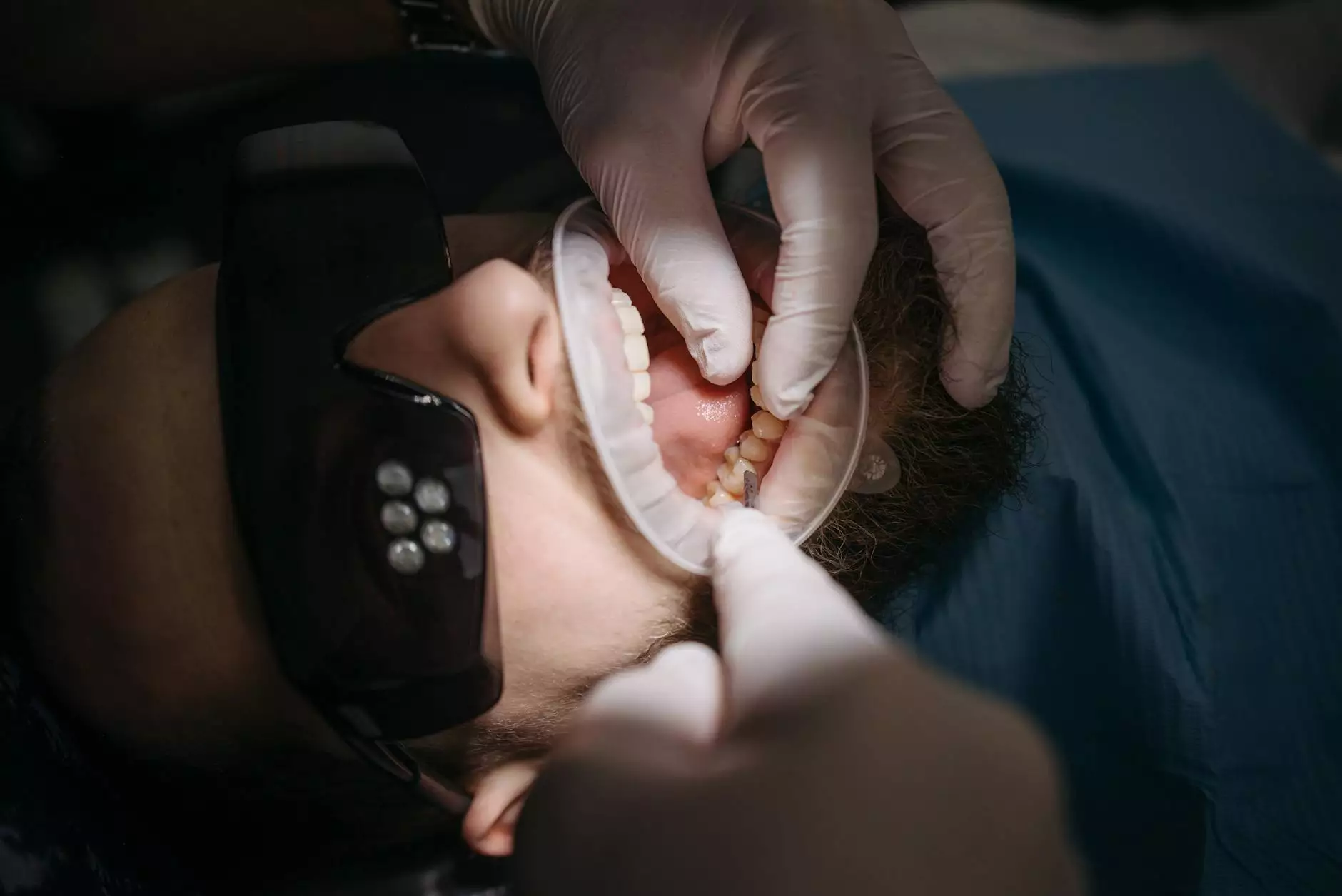Understanding Tendinopathy and Tenosynovitis: A Complete Guide to Differentiation, Diagnosis, and Effective Treatment

In the realm of musculoskeletal health, two common yet often confused conditions are tendinopathy and tenosynovitis. Both involve painful inflammation and dysfunction of tendons, but they differ significantly in their pathology, presentation, and management. Recognizing these differences is crucial for appropriate treatment and optimal recovery.
What is Tendinopathy?
Tendinopathy refers to a spectrum of tendon disorders that cause pain, swelling, and impaired performance. It is characterized by degenerative changes within the tendon tissue itself, often due to repetitive strain, overuse, or inadequate recovery periods. Tendinopathy is common in athletes, manual laborers, and individuals engaging in repetitive motions or strenuous activities.
Pathophysiology of Tendinopathy
This condition involves a gradual degeneration of collagen fibers within the tendon, leading to disorganized tissue matrix. Microtears accumulate over time, and the body's inability to repair this damage results in chronic pain and dysfunction. Unlike inflammatory conditions, tendinopathy predominantly involves degenerative rather than inflammatory processes, although inflammation can sometimes be secondary.
Symptoms of Tendinopathy
- Insidious onset of localized pain at the tendon site
- Pain worsens with activity and improves with rest
- Tenderness upon palpation of the affected area
- Possible mild swelling or thickening of the tendon
- Decreased strength and range of motion
What is Tenosynovitis?
Tenosynovitis is the inflammation of the synovial sheath surrounding a tendon. Unlike tendinopathy, which affects the tendon substance, tenosynovitis involves the synovial membrane, often leading to swelling, pain, and difficulty moving the affected joint or limb.
Pathophysiology of Tenosynovitis
This condition results from repetitive strain, infection, or systemic inflammatory diseases like rheumatoid arthritis. The inflammation causes the synovial sheath to swell, producing friction during movement. This can lead to pain, restricted motion, and sometimes the formation of adhesions.
Symptoms of Tenosynovitis
- Acute or chronic pain along the tendon
- Swelling, warmth, and redness around the tendon
- Crepitus or a creaking sensation during movement
- Fever or systemic symptoms if caused by infection
- Limited range of motion or stiffness
Key Differences Between Tendinopathy and Tenosynovitis
While both conditions involve tendons and can cause similar symptoms such as pain and swelling, understanding their key differences is essential for accurate diagnosis:
AspectTendinopathyTenosynovitisPathologyDegeneration of tendon fibersInflammation of the synovial sheathOnsetGradual and insidiousSudden or gradual, often related to overuse or infectionPrimary tissue affectedTendon substanceSynovial sheath surrounding the tendonSymptomsPain worsens with activity, improves with rest; tender, possibly thickened tendonPain, swelling, redness, warmth, crepitus, limited movementInflammationMinimal or secondary inflammationPrimary inflammation of synovial sheathHow Do I Know If I Am Dealing With a Tendinopathy or a Tenosynovitis? Learn More
Distinguishing between tendinopathy and tenosynovitis relies heavily on understanding symptoms, history, and clinical examination. Moreover, advanced diagnostic tools such as ultrasound imaging and MRI can provide definitive insights:
- History of onset: Tendinopathy tends to develop gradually due to overuse, whereas tenosynovitis may have a more sudden onset or be related to injury or infection.
- Physical examination: Tendinopathy usually presents as localized tenderness with possible thickening, while tenosynovitis often shows swelling, warmth, and crepitus along the tendon sheath.
- Imaging: Ultrasound and MRI can reveal degenerative tendon changes in tendinopathy or fluid accumulation and inflammation in tenosynovitis.
- Laboratory tests: Blood tests might be more relevant if systemic inflammatory causes are suspected in tenosynovitis.
Effective Diagnosis: Why Professional Evaluation Matters
Accurate diagnosis is fundamental to effective treatment. Consulting health professionals such as chiropractors, sports medicine specialists, or orthopedists ensures that the condition is correctly identified. Diagnostic imaging such as ultrasound or MRI provides visual confirmation and guides targeted interventions.
Comprehensive Treatment Strategies for Tendinopathy and Tenosynovitis
Effective treatment hinges on the proper identification of the condition. While conservative management remains the first line of approach, combining various therapies enhances recovery prospects:
Treatment for Tendinopathy
- Rest and activity modification: Avoid activities that exacerbate symptoms
- Physical therapy: Focused on eccentric exercises to promote tendon healing
- Shockwave therapy: Promotes tissue regeneration
- NSAIDs or pain relievers: Short-term use to reduce pain, although inflammation is minimal
- Ultrasound or laser therapy: To stimulate healing
- In some cases, platelet-rich plasma (PRP) injections can enhance tissue repair
Treatment for Tenosynovitis
- Rest and immobilization: Using splints or braces to limit movement
- Anti-inflammatory medications: NSAIDs to reduce inflammation
- Ice therapy: Applying ice packs to decrease swelling and pain
- Physical therapy: Gentle stretching and strengthening exercises
- Treating underlying causes: Addressing systemic inflammatory disease if present
- Antibiotics or corticosteroids: Needed in infectious or severe inflammatory cases
Preventive Measures and Lifestyle Modifications
Preventing tendinopathy and tenosynovitis involves proactive strategies to minimize risk:
- Engage in proper warm-up and stretching before activities
- Maintain balanced activity levels and avoid sudden increases in intensity
- Use ergonomic tools and techniques in occupational settings
- Ensure adequate rest and recovery time between strenuous activities
- Incorporate strength training to support tendons and joints
- Stay hydrated and ensure nutritional support for tissue repair
The Role of Specialized Centers and Chiropractic Care in Musculoskeletal Health
Specialized chiropractic clinics like those associated with iaom-us.com play a vital role in managing tendon-related conditions. Chiropractors trained in musculoskeletal medicine utilize a combination of manual therapy, targeted exercises, and patient education to facilitate healing and restore function.
Advantages of Professional Chiropractic Intervention
- Personalized assessment based on individual biomechanics
- Non-invasive treatment approaches tailored to specific conditions
- Use of advanced diagnostic tools for accurate evaluation
- Guidance on activity modification and ergonomic improvements
- Holistic approach addressing underlying causes
Conclusion: Prioritize Informed Care for Optimal Recovery
Understanding the nuanced differences between tendinopathy and tenosynovitis empowers patients and practitioners to pursue targeted, effective treatments. Early diagnosis, combined with professional intervention and lifestyle modifications, significantly enhances recovery outcomes.
For detailed insights and personalized evaluation, consider consulting with qualified health professionals who specialize in musculoskeletal health. Remember, timely and accurate management is the key to returning to your normal activities and maintaining long-term joint and tendon health.
https://iaom-us.com/how-do-i-know-if-i-am-dealing-with-a-tendinopathy-or-a-tenosynovitis/








